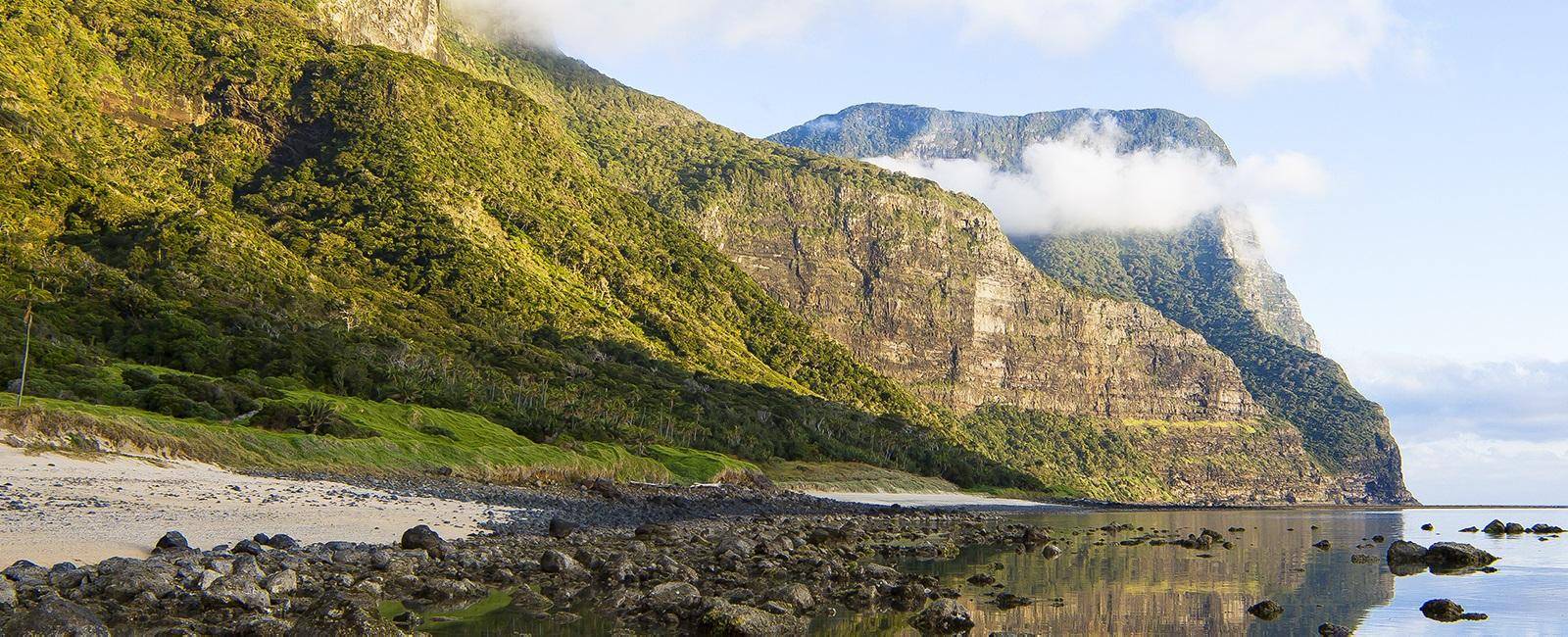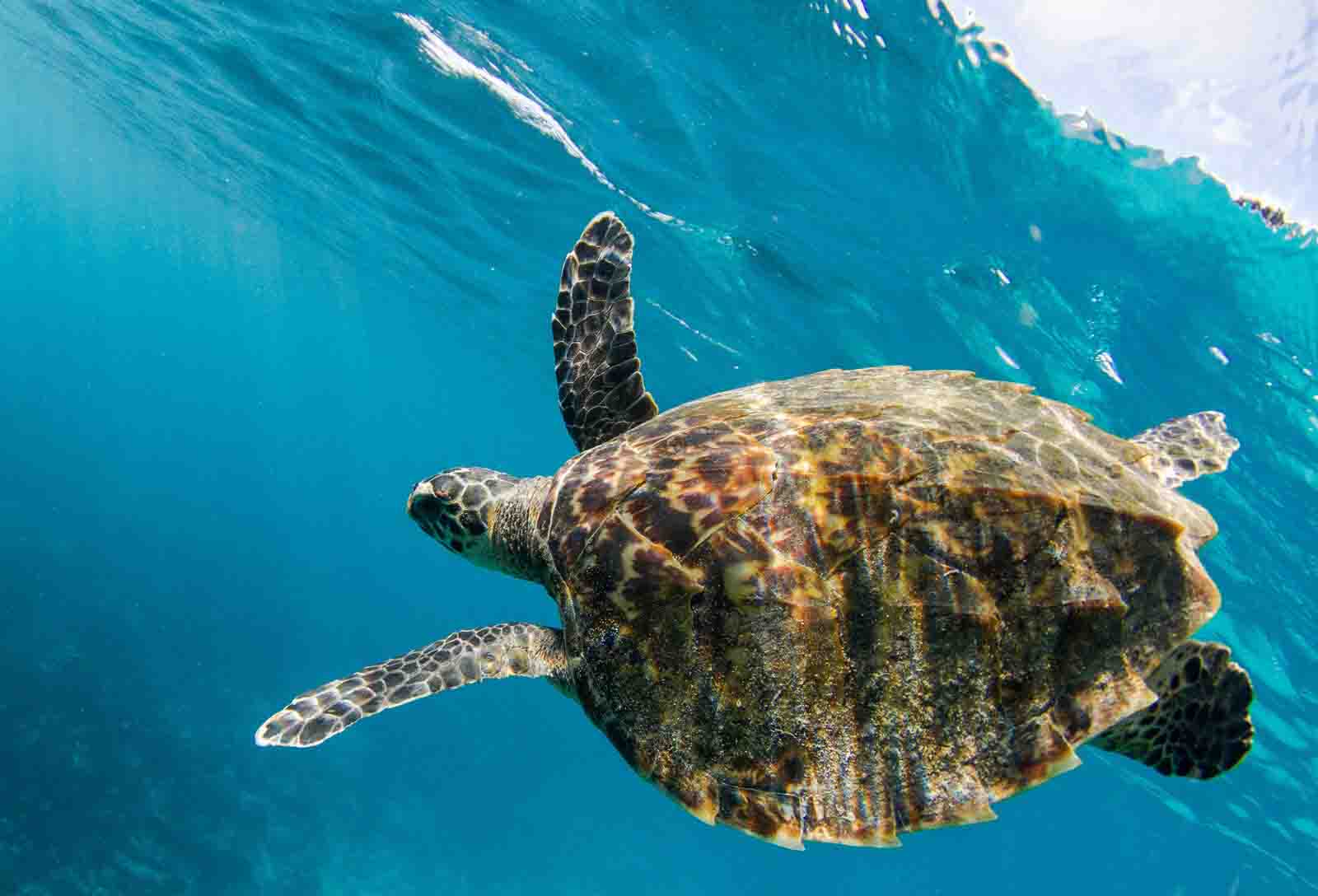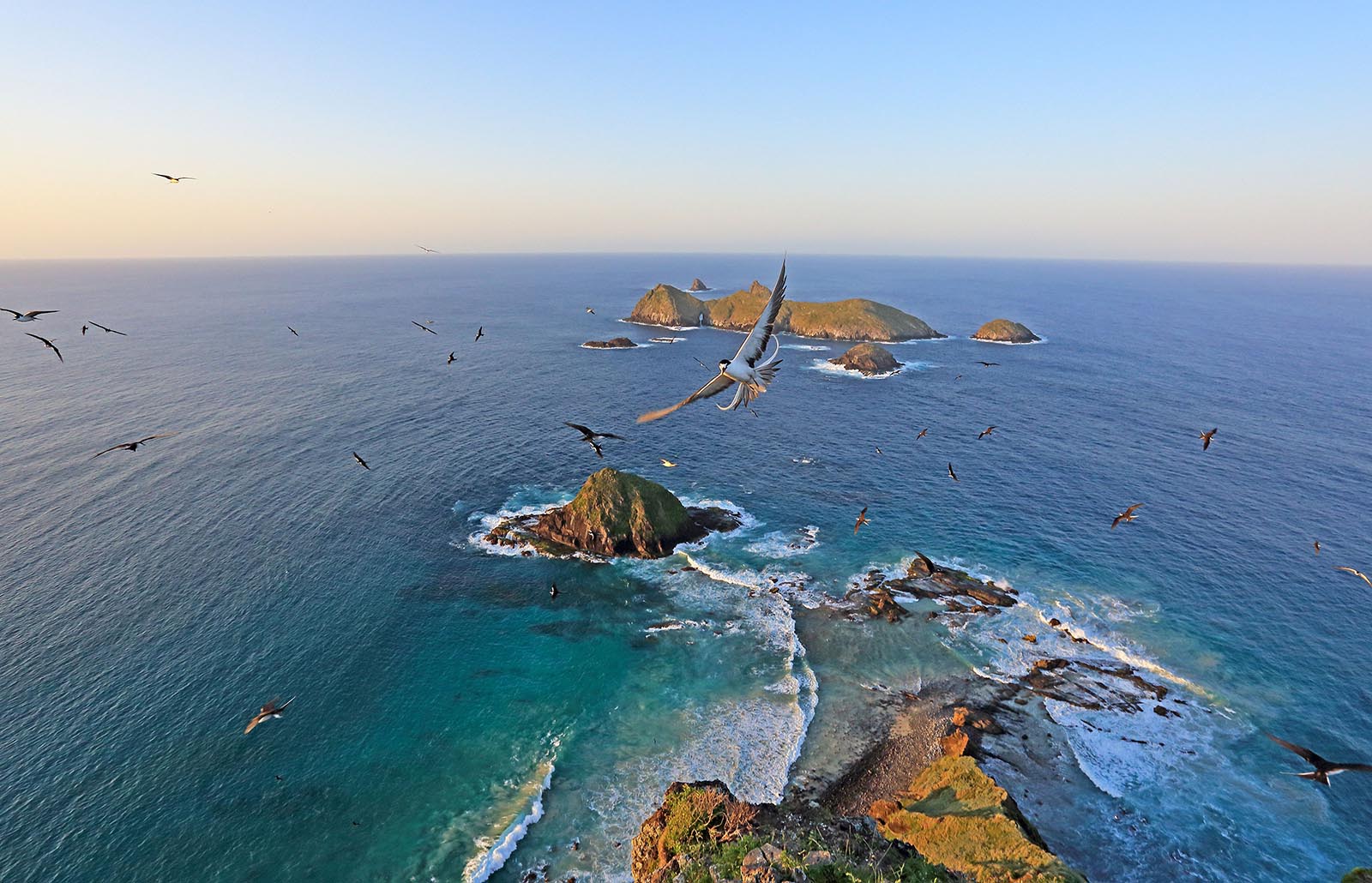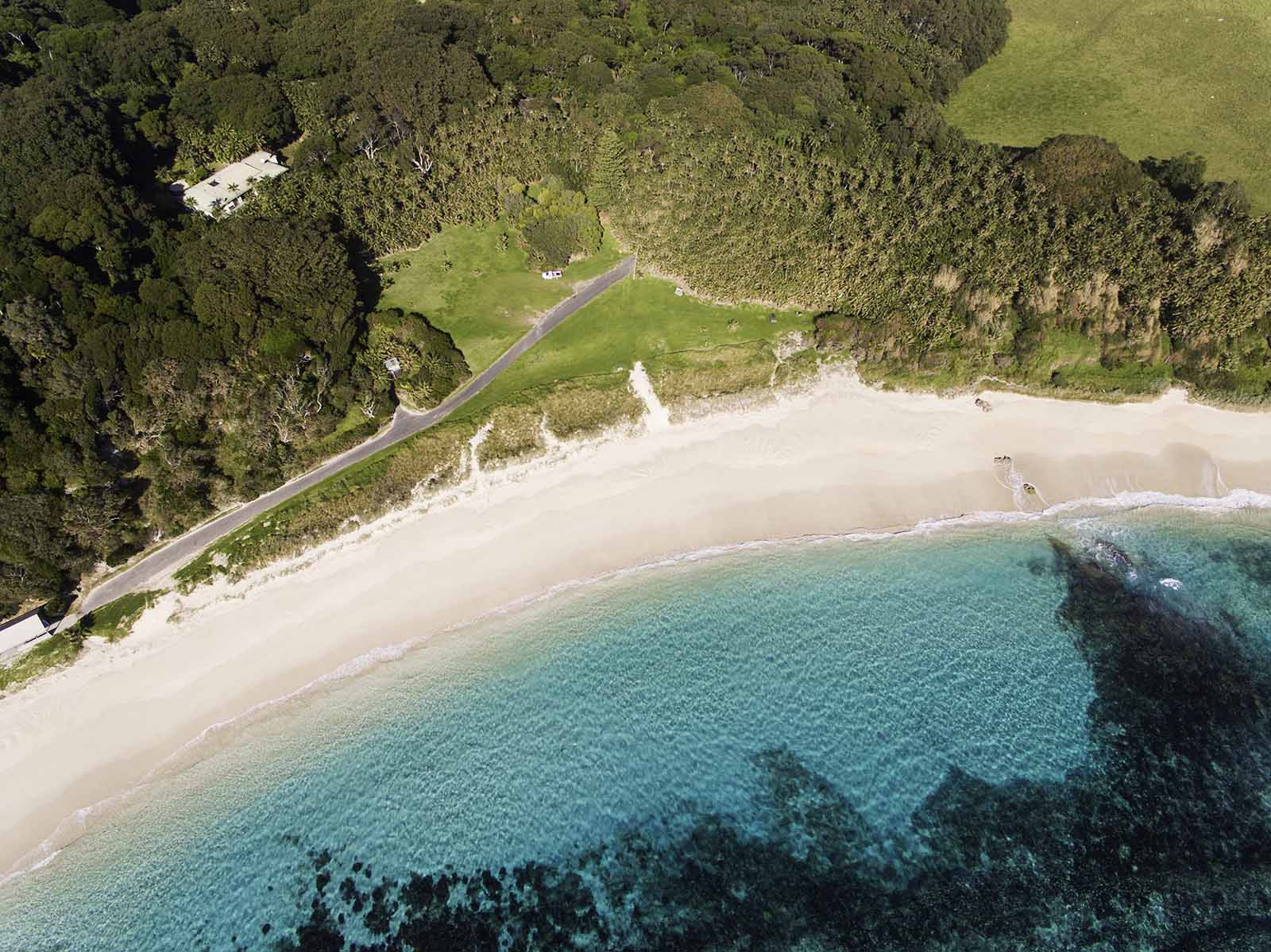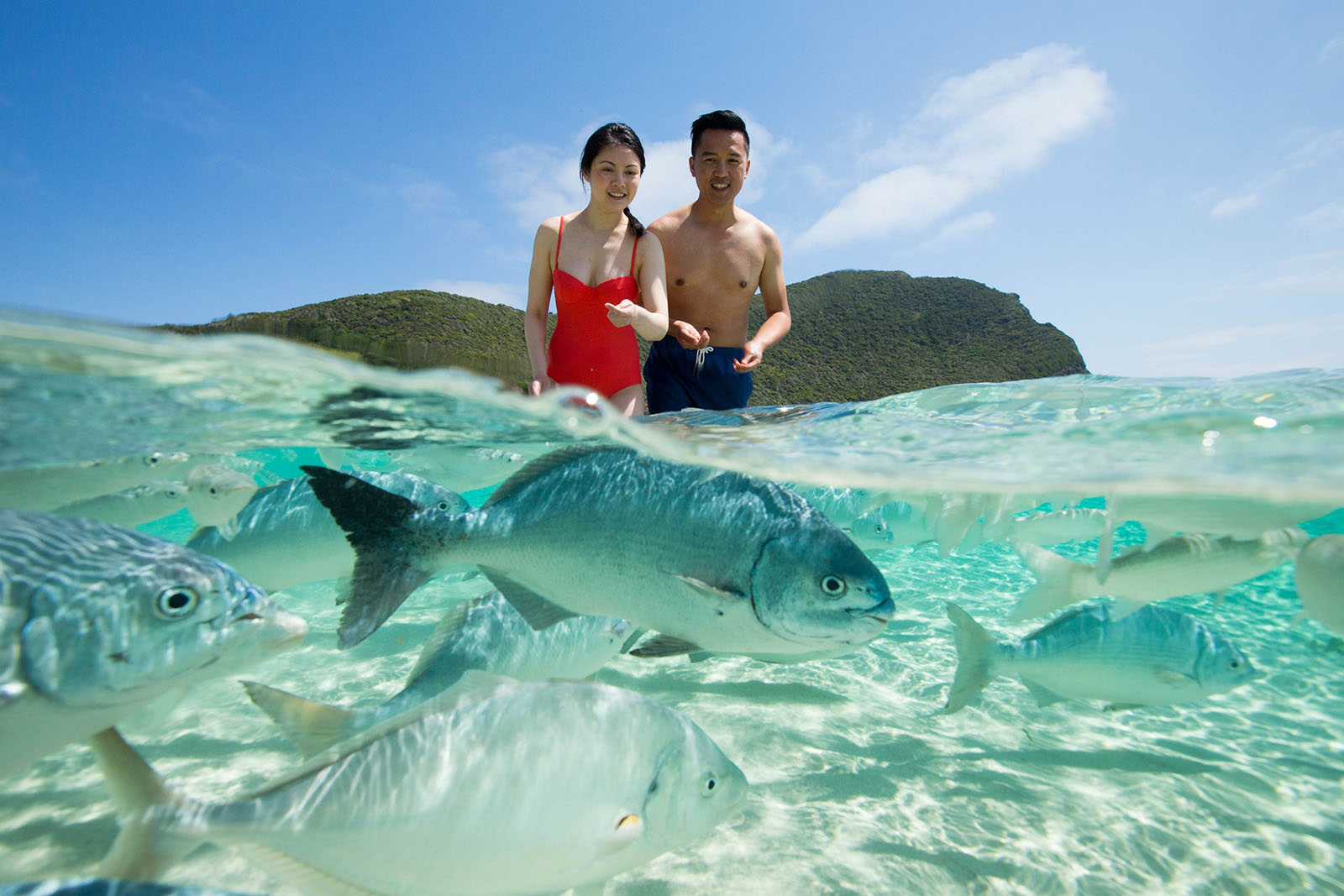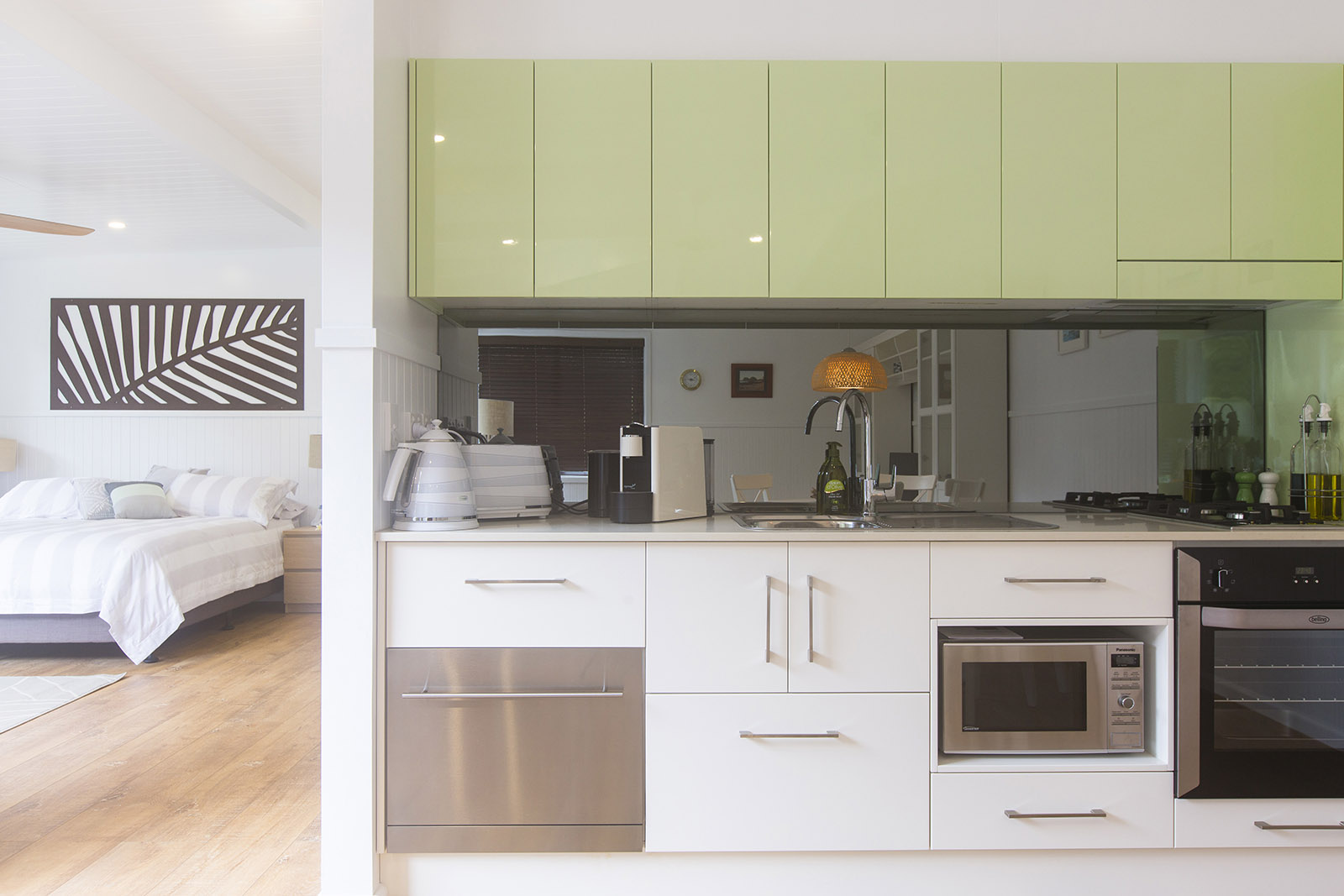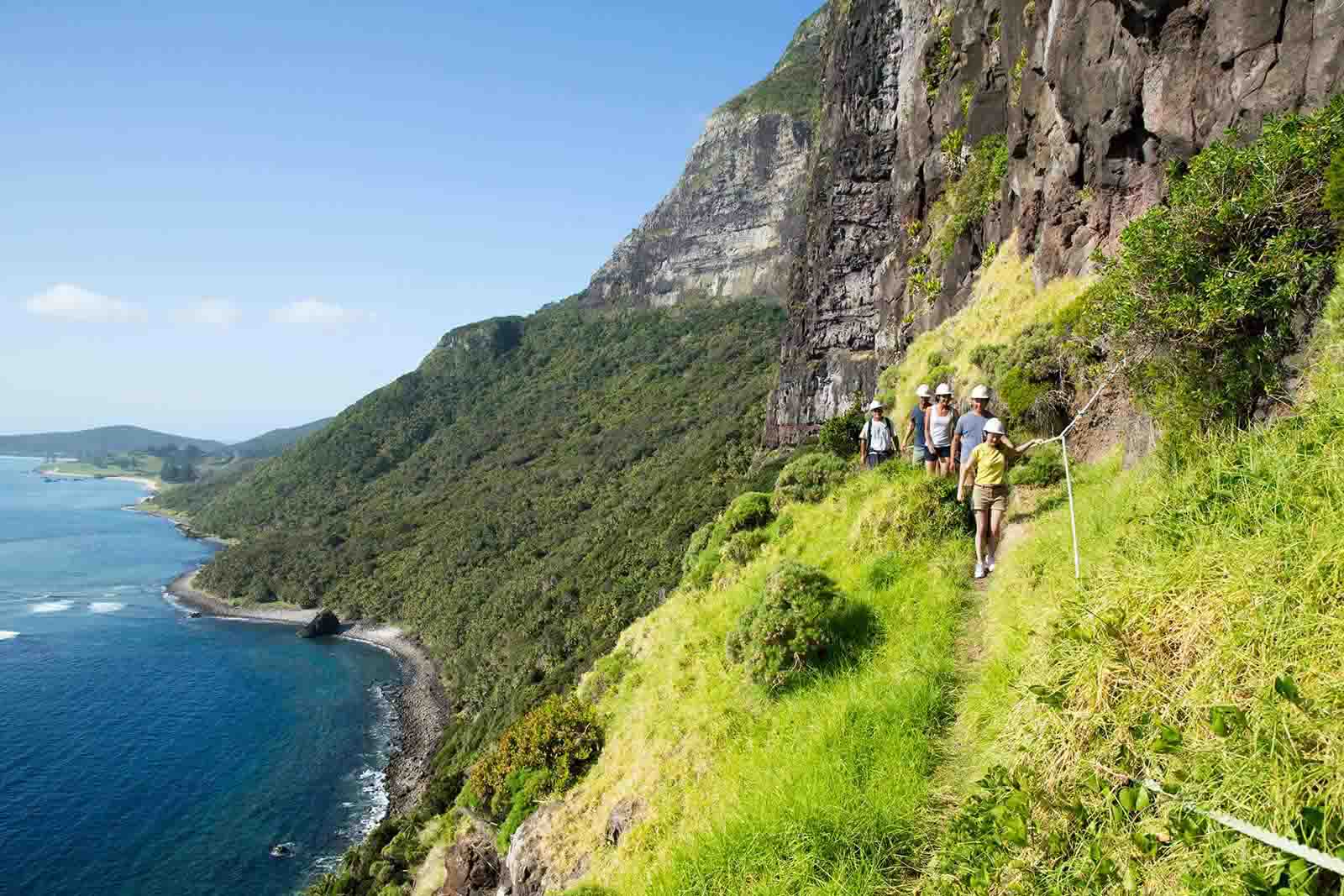
When David Attenborough arrived on Lord Howe Island he described it as "so extraordinary it is almost unbelievable... few islands, surely, can be so accessible, so remarkable, yet so unspoilt." And it seems nothing much has changed.
When I arrived, a couple riding in the shuttle with me from the airport were there to celebrate an anniversary, 20 years after they spent their honeymoon on the island, and said much the same - apart from a few accommodation upgrades, it had hardly changed at all.
And that is perhaps the secret to the lasting beauty of Lord Howe Island. Although it is just two hours from Brisbane, visitors on the island are limited to 400 at any one time and resident numbers are slightly less.
Just getting there is a step back in time, aboard a Dash 8 turboprop, the smallest aircraft in the Qantas fleet. It seats 36 passengers (the first commercial services to Lord Howe Island on the 'flying boats' of the 1940s and '50s carried 42), stowed baggage allowance is a strict 14kg per person (and on the return journey passengers are weighed as well as their baggage for the pilot to assess before making his final take-off call).
Local naturalist Ian Hutton has been living on Lord Howe Island for nearly 40 years and says its like living inside a David Attenborough documentary every day. As a curator of the Lord Howe Island Museum and part-time tour guide, Hutton has a wealth of knowledge about the local environment and his informal evening talks at the museum are a great way to find out what to look out for on walks around the island. The museum is conveniently adjacent to the popular Coral Café, a top spot to plot the week's activities over dinner.
Easy walks to worth-it hikes
Lord Howe Island is renowned for its walks - the island may only be small, at 11km long and 2km wide, but it has more than a dozen walks ranging in difficulty from an easy to steep and exhausting. Views are not the only reward as birds are in abundance on the island and almost every walk has its star species to look out for.
The first scene in my own imaginary documentary starts on a tour to North Bay and my first trek starts vigorously, then slows as I hit the stairs up the walking track of Mt Eliza (for the bushwalkers, Class 4, 0.6km) - I soon find out there are many stairs on the walking tracks around the island. Eventually, I'm balancing on a windy hillock waiting to catch sight of screeching sooty terns in their breeding place and we are rewarded when a few wheel and dart higher up the hill ahead of us, but we can go no further as a sign bars the way to allow the birds to breed in peace without interference from nosy humans.
Marine life spotting
It's a welcome pause and a chance to admire the views back to the lagoon and Lord Howe's most dramatic peaks, Mount Lidgbird and Mount Gower. Back at the bottom and after a quick cuppa with our guide - Anthony Riddle, of Marine Adventures - I have donned a wetsuit and am floating stealthily in the shallows of North Bay, keeping an eagle eye out for a turtle.
When I see one I am startled - it's huge, much bigger than I expected - and when it moves off I try to follow it a little distance for the thrill of it but it's surprisingly quick and soon it is gliding further away and I am struggling to keep it in sight - then I hear voices and I'm being called back to the boat.
Only halfway into day one of my expedition I've encountered two of Lord Howe's most popular 'locals' without much effort at all. Feeling pleased with myself I decide to set out on another walk.
Already I've heard that Kim's Lookout (Class 4, 7km) on Malabar Hill offers a panoramic view of the island so I take the path along Old Settlement Beach to tackle the uphill track. More stairs.
World heritage permanently preserved
Sitting on a boulder at the lookout with such a view ahead seems to be a good time to ponder the details: Lord Howe is not only a World Heritage Area, it is a Permanent Park Preserve which means that most of the island is virtually untouched forest, and there are plants, birds and even insects here that are found nowhere else in the world. Snakes and poisonous spiders, though, are not among them. Walkers can be assured they will not come upon one deadly critter on these paths. Looking out onto the palette of blues of sea and sky I can also see how it's been called one of the 'cleanest' places on earth; there is no air or sea pollution or litter.
I continue walking along the island's most northern edge, just over 200 metres above sea level and it's a sheer drop to the water - and enough breeze on the open trail to make it exhilarating.
I'm starting to see what local photographer Kenny Less says he likes about the island landscapes that inspire him, "rich in blues and greens and intense skyscapes; an untouched ruggedness everywhere".
It suddenly occurs to me that I've been on the track a couple of hours without a single other person in sight. Finally I reach the last leg to Ned's Beach, through the paddock, then back down the road to Old Settlement Beach and I'm home - and I've never been so happy to sit down, lie down, and go to sleep!
The fish are biting
The next day I have a perfect excuse for a 'rest day'. Everyone is talking about the fish that come right up to almost eat out of your hand at Ned's Beach and it's true - there are heaps of fish circling the shallows as soon as someone even dips a toe in the water. If you throw in a few pellets of fish food they go into a feeding frenzy.
It's hilarious and a little scary at the same time - hilarious because the fish (some large salmon, trevally and mullet among them) weave and tuck around your legs in a way that's both ticklish and a bit unsteadying as well; scary because you don't want to fall in the water and get caught in a tangle of limbs and hungry fish.
The food is provided by local Rod Giles who has worked with the Marine Parks Authority to source a food pellet, and a dose, that is healthy for the fish and he makes it available in an automatic dispenser from the beach shed, at $1 for a small cup. You can also hire snorkel gear (and paddleboards) on an honour system - pay a few dollars into the box and write down what you are taking in the book.
Ned's beach just also happens to have some beautiful coral right off the beach so it's easy to spend a few hours exploring the reef and ticking fish off your 'seen' list. Butterflyfish, check. Angelfish, check. Double header wrasse, check. Spangled Emperor, check. The protected marine park extends 12 nautical miles out from shore so there are plenty of fish that make this most southern reef in the world their home.
I am just a bit too early in the season to follow in David Attenborough's footsteps and call the providence petrels down from the sky under the canopy of Mount Gower. It's a unique phenomenon he recorded for his Life of Birds special all those years ago and it's something that other visitors have been able to see for themselves every autumn and winter on the guided treks up the mountain.
Base camp
Howe Island, even for the purist nature lovers, but you can enjoy a little luxury checking into Admiralty Apartments (named for the islands that stand just offshore and in view from the beach beyond the garden). It's the closest accommodation to Ned's Beach and just a short amble through the trees to Ned's Shed to grab some fish food, snorkelling gear or paddleboards.
There are two self-contained apartments, discreetly positioned for privacy, each with a sun deck and outdoor barbecue, super-sized king bedroom, massive ensuite with freestanding bathtub - a godsend for a muscle soothing soak after a day's hiking - open plan kitchen (with coffee machine), dining and living area, and essential extras such as bath robes, beach towels and day packs in the closet.
Dining in style
There's no need to survive on basic rations on this naturalist escape. Fine dining to match any in the city is served daily at Arajilla Retreat, at Old Settlement Beach, with an everchanging menu to reflect the fresh nature of the produce they use from their own kitchen garden, local growers, the seafood catch of the day and what comes over on the supply boat.
The corn salsa jalapeno, cherry tomatoes, radish popcorn chorizo crumb and spiced corn puree were an inspired and delicious accompaniment to my trevally for dinner one night, but I've heard the flame-tailed snapper is the dish to look out for. Arajilla Retreat provides three meals a day for guests, including picnic hampers to have outdoors. The restaurant is open to outside guests for dinner.
GETTING THERE
PLAN YOUR TRAVEL

